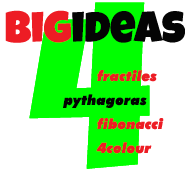WRITER’S BLOCK
When you imaginary friends won’t talk to you.
Some writer's seem to get it others deny its existence at all, but working with a class of 30 students it's apparent that writer's block does exist.
So how do you overcome it, how can we help our students improve their writing, value themselves and gain the most from the writing experience?
Firstly it seems we need to accept that writing is not always easy, it can be a struggle, it can frustrating, it can be tough going and hard work,
but at least its not painting.
'Sometimes, it is true, agony visits the head of a writer. At these moments, I stop writing and relax with a coffee at my favorite restaurant,
knowing that words can be changed, rethought, fiddled with, and, of course, ultimately denied. Painters don't have that luxury.
If they go to a coffee shop, their paint dries into a hard mass.' Steve Martin
Block is defined as:-
block / bläk / n
An usually temporary condition in which a writer finds it impossible to proceed with the writing of a novel, play, or other work.
BM Writer's Block - The CUBE of Inspiration.
How do published authors resolve writing slow downs, 'sticky' patches, lack of inspiration, writer's reluctance, frustration, unproductivity,
the 'I don't feel like writing today' problem, lack of plot ideas, and just plan boredom with the current piece of writing; or WRITER'S BLOCK?
What are the methods that these authors use and can they be used to stimulate young writers in the classroom?
I wrote to some of the best Australian children's authors and asked them how they dealt with writer's block. Here are a few of their responses.......
AUTHOR RESPONSES

Sonya Harnett "I walk the dog, mess about in the garden, go out, see things."
Libby Gleeson "I go and read, read, read"
Geoffrey McSkimming "Often I go for a long walk or listen to some music..."
Morris Gleitzman "Sleep on it. Remind myself what the story is actually about. Listen to the character. Go to the movies."
James Moloney "The solution is to leave them alone for a few weeks....(try telling that to a class........ - It's Okay, Sir, I'll just leave this story a few weeks and hand it in a month overdue)"
Tohby Riddle "For myself I rarely stop looking for inspiration and keep a notebook with me at all times. If I really feel stuck I might go to a great bookshop, take a walk, talk to inspiring friends, or leaf through the books of my favourite authors/artists/thinkers. At other times it is absolutely important to stay at your desk, persistence is all important."
Moya Simons "If I'm low on ideas I also go for long walks; play the piano, go to the movies."
Markus Zusak "I re-watch my favourite movies......do some exercise, or go out and wander around."
Janeen Brian "For me I need paper and pen. I use brainstorming. I jot down ideas. I have to see them, have to write them, have to watch to see if something sparks off a thought: it has to be in front of me."
SOLUTIONS

And indeed there seems to be some common solutions to overcoming this most diabolical of problems.
1. Relax, sleep on it, don't panic, and let your mind wander around a bit.
2. Do something that inspires you, talk to friends, brainstorm your ideas, read, listen to music, go to the movies.
3. Leave it alone for a while, get some exercise, and walk the dog.
4. Keep a notebook.
5. Be persistent, commit to finishing.
What does this say about creating the environment needed for productive writing in the classroom?
WRITING ENVIRONMENT

CREATING a WRITING ENVIRONMENT
The writing environment needs to be full of inspiration with great books to read, opportunities for inspirational discussion with peers and great thinkers, writers, artists etc, opportunities for relaxation in a positive friendly environment, time to reflect and most importantly plenty of tea and coffee, or milk and cookies.
All school budgets in should include a beverage dispenser for the writing classroom, a hard thing to manage in an educational setting, perhaps, but even the greatest thinkers and writer's have relied heavily on the social aspects of tea and coffee drinking to progress and discuss their ideas.
The great modern day mathematician, Paul Erdos, also a great writer, who authored or co-authored 1,475 of papers in his lifetime, believed coffee was a great collaboration facilitator. "A mathematician," Erdös was fond of saying, "is a machine for turning coffee into theorems."
Collaboration is really the key, an environment which encourages and stimulates is the answer. By its very nature writing is difficult to schedule and often takes longer than the allocated 30-40min writing session, young writers need to be given scope outside these time constraints; longer writing sessions which include opportunities for collaboration - productive on task discussions with peers, older children, teachers and guests, research, reading, viewing movies and relaxation.
The use of text types to teach writing offers students useful scaffolding but this is only a small part of the writing process. It is the inspiration, the development of ideas & thoughts that bringing together of all these elements. This provides a truly satisfying writing experience, which has real value for the student.
CUBE OF INSPIRATION

The Writer's Block - CUBE OF INSPIRATION
Use the 'Writer's Block" CUBE OF INSPIRATION to provide warm up activities and story starters for your students. The Block has a number of inspirational ideas by published authors.
Students can also make their own writer's blocks using their ideas for story starters.
Use the blocks in tandem as well; the challenge of linking 2 ideas can stimulate great discussion amongst peers. For younger children, one, two, three or four words can be added to each of the cube's surfaces and stories written that connect these words. Download the cube or a blank version of the cube.
Writing about WRITER'S BLOCK
Writer's Block itself is a great topic for discussion, knowing that published writer's also get 'stuck' is often a great relief to children.
The Questionnaires I sent out to authors are available on the Virtual Teacher Writing page.
Just click on the "Author Questionnaires" at this site.
Download them and use them as primary source material to promote discussion about writer's block and writing inspiration. Ask your students to design their own writer's block tips.
WORLDWIDE Inspiration?

Inspiration comes from many sources; one of the most valuable, abundant and accessible sources for classrooms today is the Internet.
Here you will find links to great art, great writing, great thinkers, great ideas and fantastic opportunities for research into all imaginable topics. The great cultural trip to Europe, and England by most great Australian thinkers artists and writers can now be virtually duplicated at the click of a mouse in the classroom. Take advantage of this opportunity and let your students fly to the great museums and galleries of the world.
Try these teacher's resources for writing Inspiration on the Web
Pobble363 Fabulous site for writing prompts and inspiration, this is my goto site.
30 Days of Poetry is another great site for children. Day 1- Write a poem where each line starts with a letter from your first name (an acrostic). It can be about anything, but it should not be about you or your name.
Google Arts and Culture is an online platform of high-resolution images and videos of artworks and cultural artifacts throughout the world. Great source of inspiration.
You might also like to try some inspiration using the techniques on Virtual Teacher. Imaginairing and Flow Writing.
Happy writing (I couldn't think of anything else to write, back to the cube.....!)
References

Steve Martin (1998) Pure Drivel. Hyperion, USA.
Paul Stafford (1998) Ned Kelly's Helmet. Crawford House of Publishing, Bathurst NSW.
Morris Gleitzman (1991) Misery Guts. Pan Macmillan Australia, Sydney.
John Marsden (1993) Everything I Know About Writing, Pan Macmillan Australia, Sydney
Paul Hoffman (1998)The Man Who Loved Only Numbers: The Story of Paul Erdös and the Search for Mathematical Truth. Hyperion, USA.
Also thanks to the following authors who contributed to this article:-
Sonya Hartnett, Steven Herrick, Libby Gleeson, Geoffrey McSkimming, Dyan Blacklock, Morris Gleitzman, James Moloney, Tohby Riddle, Moya Simons, Dave Luckett, Markus Zusak, Janeen Brian.
220125
© Cathy Brown 1998 - 2025 © All images & Videos Cathy Brown Located in Sydney NSW Australia all rights reserved.
No unauthorised reproduction without written permission. Webmaster & Designer - Cathy L. Brown
Virtual Teacher is committed to ensuring that our AI systems & assistants are used responsibly & ethically. Our AI is designed to support educators & students by providing personalized learning experiences, enhancing engagement & promoting understanding. We prioritize the safety, privacy, & security of our users, ensuring that our AI tools operate transparently & align with the best practices in the industry.
The NSW AI AssessmentFramework requires self assessment to deterimin Determine whether your system / project should use the AIAF. All AI projects used by Virtual TEacher are Low Risk or No Risk applications. Check out the Risk Evaluation page attached.


